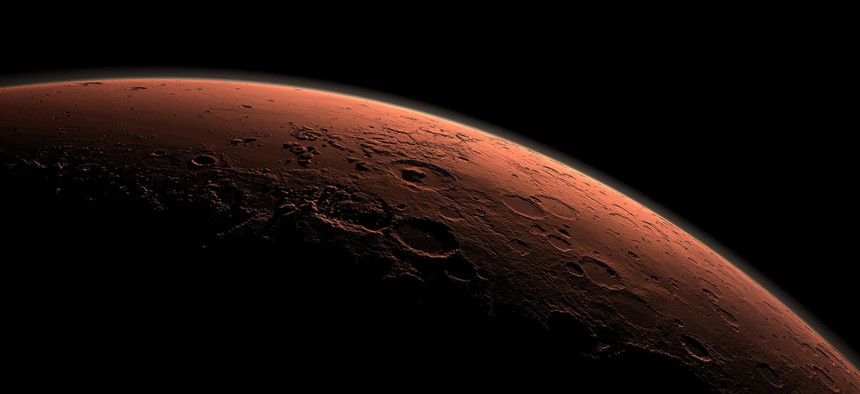
NASA file photo
NASA Taps Six Companies to Make Habitats That Could House Astronauts on Mars
The space agency has tapped six private companies, and committed.
By 2030, the National Aeronautics and Space Administration (NASA) wants to send humans to Mars. In order to make the Journey to Mars, which began at the start of this decade, a reality, the space agency will have to figure out how to establish habitation systems that could provide a safe place for its astronauts on the red planet.
NASA has selected six private U.S. companies to develop concepts and prototypes of deep space habitats on Earth, with the idea that they’ll eventually be used on our solar system neighbor. The companies will have 24 months to assist with “the commercial development of space in low-Earth orbit while also improving deep space exploration capabilities to support more extensive human spaceflight missions,” NASA announced on Aug. 9.
The six companies are:
- Bigelow Aerospace
- Boeing
- Lockheed Martin
- Orbital ATK
- Sierra Nevada Corporation’s Space Systems
- NanoRacks
“The next human exploration capabilities needed beyond the Space Launch System (SLS) rocket and Orion capsule are deep space, long duration habitation and in-space propulsion,” said Jason Crusan, director of NASA’s Advanced Exploration Systems, according to the release. “We are now adding focus and specifics on the deep space habitats where humans will live and work independently for months or years at a time, without cargo supply deliveries from Earth.”
This is part two of NASA’s Next Space Technologies for Exploration Partnerships (NextSTEP) program. In 2015, four partners—Bigelow Aerospace LLC, Boeing, Lockheed Martin and Orbital ATK—were selected to work on deep space exploration and habitats. NextSTEP-2 will hone in on “missions in the area of space near the moon, which will serve as the proving ground for Mars during the 2020s,” NASA states. “These missions will demonstrate human, robotic and spacecraft operations in a true deep space environment that’s still relatively close to Earth and validate technologies for the longer journey to Mars.”
Bigelow is a pioneer of sorts when it comes to deep space habitats. Earlier this year, the Las Vegas-based company launched its latest experiment: the Bigelow Expandable Activity Module (BEAM), which was the first inflatable habitat NASA allowed to be attached to the International Space Station (ISS). The module was flown into space on SpaceX’s cargo cargo capsule, attached to the ISS, and expanded and pressurized on May 28. For the next two years, it’ll remain in orbit above the earth to test how well expandable habitats hold up against conditions like solar radiation and extreme temperatures.
NanoRacks’ inclusion in NASA’s current program signals an expansion of their existing relationship; the Texas-based company already has amini-satellite launcher on the ISS. Orbital ATK will be advancing designs for Cygnus, its current commercial cargo space craft that flies to the ISS. The other three companies will be creating or refurbishing and modifying ground demonstrators or prototypes of habitats.
Over the next two years, each of the six selected companies will be awarded varying amounts of funding for their diverse projects, but the combined total cost will be close to $65 million. In their press release announcingNextSTEP-2, NASA implied that, if necessary, the project would continue into 2018 and additional funding would then be pumped into it.
Of course, nothing guarantees functional finished products by 2018—or ever, for that matter. But NASA has a track record of successful partnerships with private companies leading to real results, like Red Dragon, SpaceX’s spacecraft that aims carry astronauts to the ISS by 2018.






